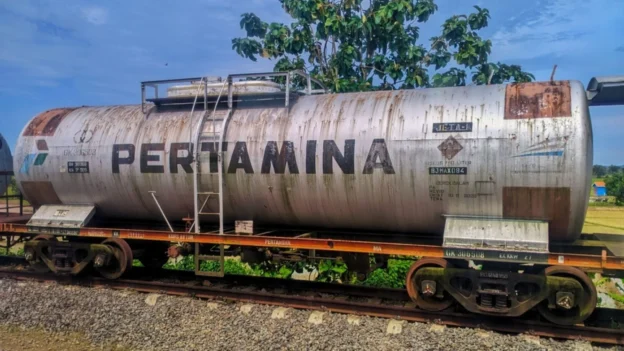U.S. researchers have successfully evaluated the use of composite metal foam (CMF) as an effective barrier against high-energy impacts in rail cars used to transport hazardous substances. This innovation, much lighter than solid steel, was able to absorb impacts that would normally puncture conventional metal plates.
The CMF consists of hollow spheres made of metals such as stainless steel or nickel, embedded in a metallic matrix. This configuration provides high compressive strength, shock absorption capacity and superior thermal insulation.
Strong drilling test results
The engineering team subjected the material to a controlled impact test with a 136-tonne railcar in motion. The railcar included a steel indenter that reached a speed of 8.4 km/h before striking steel plates used in tank cars. While conventional steel was easily punctured, a CMF panel just over 3 cm thick managed to deflect the energy, preventing perforation.
The results were so effective that the indenter bounced back after impact, leaving only a shallow dent in the steel.

In addition to the experimental work, the researchers developed a numerical model that allows precise calculation of the required thickness of CMF for a specific protection. This represents a cost and efficiency advantage, allowing to adapt the use of the material according to the needs of each type of load or structure.
Widespread applications of metal foam
Beyond its use in trains, the properties of composite metal foam make it ideal for the aerospace industry, vehicle shielding, and thermal protection of sensitive materials such as nuclear waste or explosives.
The study, funded by the U.S. Department of Transportation and published in the journal Advanced Engineering Materialshighlights the potential of CMFs as a viable alternative to steel in hazardous environments. Lead author Afsaneh Rabiei has spent much of her career developing such materials, and believes their application on an industrial scale could redefine safety standards in high-risk logistics.
These results indicate that we can build lighter and safer structures, reducing risks without sacrificing structural strength.
Rabiei noted in the scientific publication.
With its combination of lightness, mechanical strength and thermal insulation thermal insulationCMF is positioned as a comprehensive solution to meet the challenges of protecting hazardous materials during transportation.
Source and internal photo: NC StateUniversity
Photo: Shutterstock

